|
Fossil
Trees & Logs
|
||
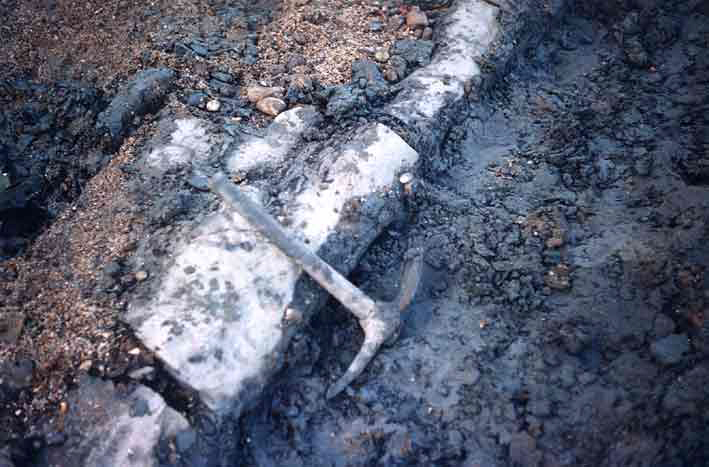 |
Fragments of fossilised wood, and at times sections of trees wash out of the clay. Those found on the beach are often broken into sections. On the foreshore however the complete preserved section can be observed. Often containing the borings of Teredina sp., the trees are contained within septarian concretions and are associated with a blueing of the clay. A tree from the rainforest falls into a river and is carried out to sea. It becomes waterlogged and sinks to the bottom. The sunken log becomes a host for small invertebrates (minor ecosystem). Animal and plant material accumulates on the leeward side of the log as it fossilises. This helps the other material to preserve. This is always characterised by a blue clay 'aura' around the log. when the clay is collected and processed, this is an excellent source for fossils. Fossils include:- small fish (teeth,spines,bones,scales and otoliths), bryozoans,crustaceans (crabs, barnacles,ostracods), rarely insects. Worm tubes (serpulids) gastropods, bivalves pterapods, scaphapods etc. | |
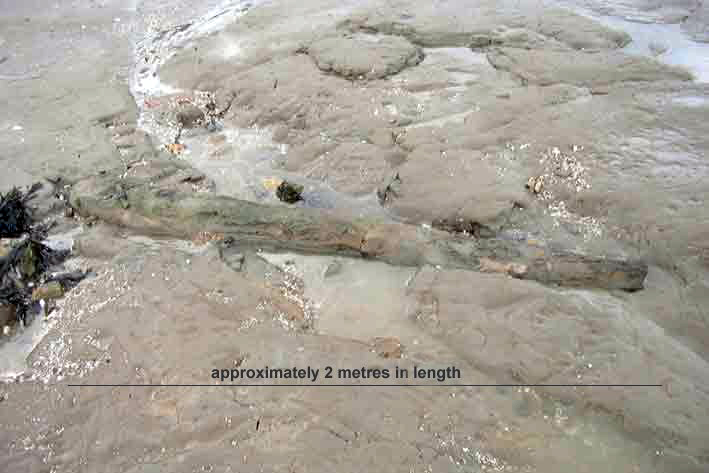 |
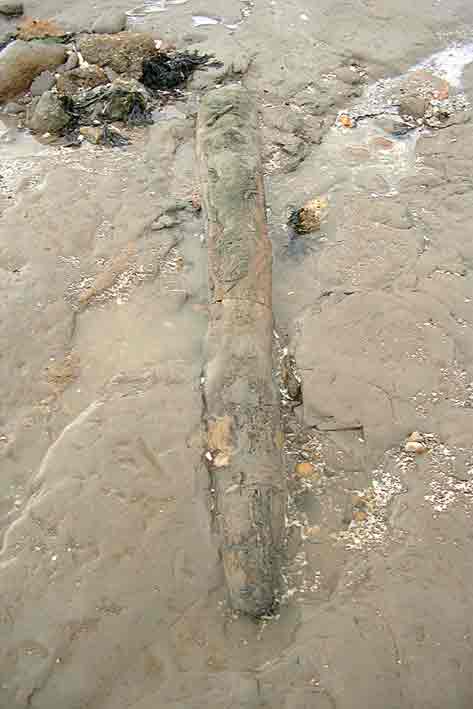 |
|
|
Fossil
log section eroding from the clay platform on the foreshore
|
||
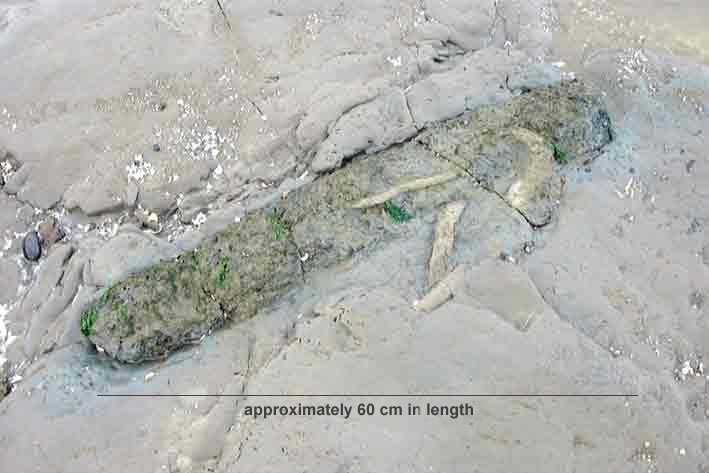 |
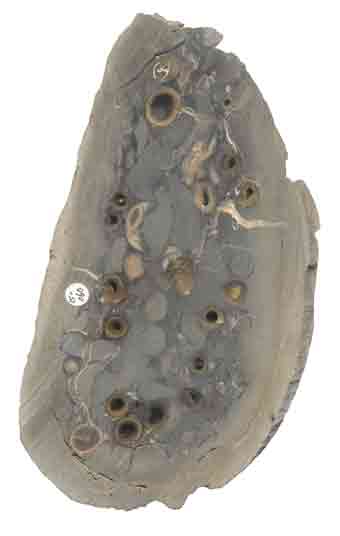 |
|
| Above, log eroding from the foreshore with Teredina borings. Below, section through a log with Teredo borings in evidence. Notice the trace fossil evidenced near to the right hand side of the fossil. | Above, cross section of log showing the 'worm' tubes of the Teridina bivalve. Below, log section on the beach with Teredina borings | |
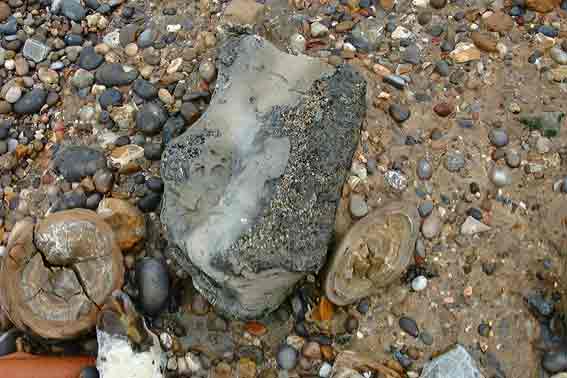 |
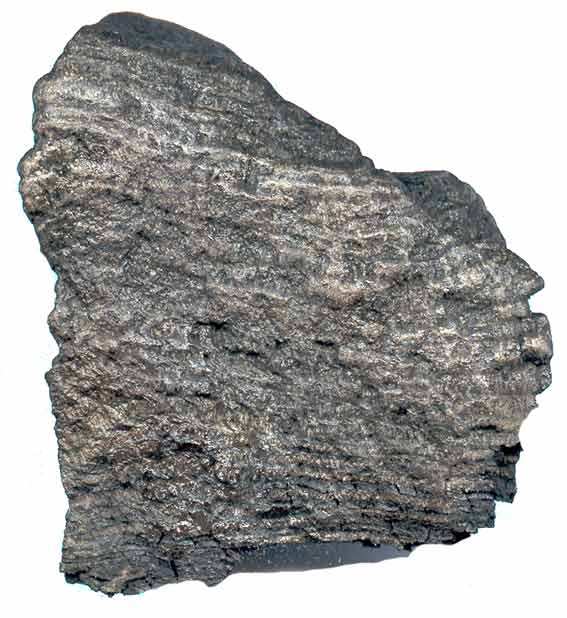 |
|
| Tree ring definition. This is the only specimen of carbonised fossil wood that I have been able to stabilise because invariably the specimens separate between the growth rings. Then they disintegrate. However there is sufficient pyrite infused within this specimen to aid its stability. | ||
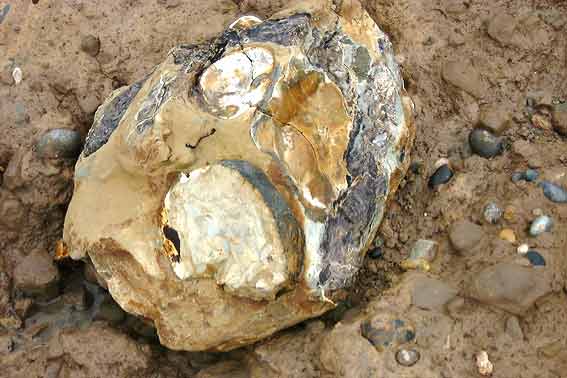 |
||
|
Tree
root section with decayed flints. The orange is a calcite deposit cementing
the fossil.
|
||
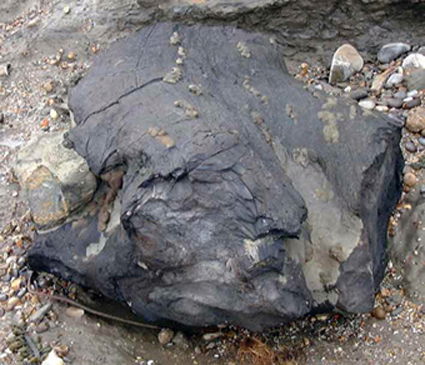 |
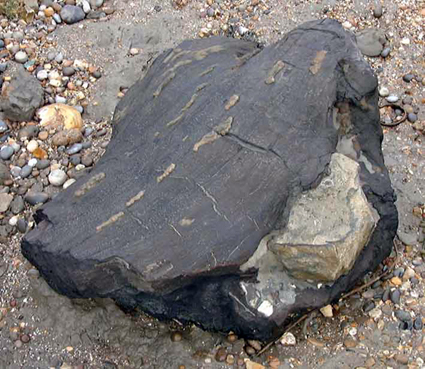 |
|
| Two views of a freshly washed out tree section, part of aEmbedded oil rich Jurassic rock in the root section much larger specimen measuring some seven metres. This section shows an oil rich Jurassic rock embedded during growth at the root end. | ||
.jpg) |
||
|
Preserved
on the underside of this log. a fish (undetermined species) must have
died while trapped, maybe?
|
||
.jpg) |
||
|
A close
up view of the fish remains
|
||

